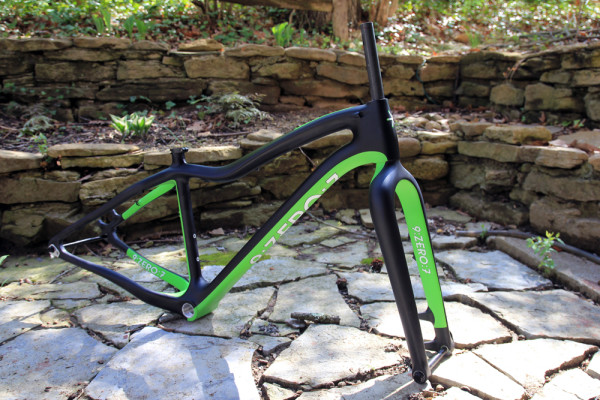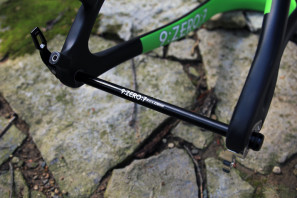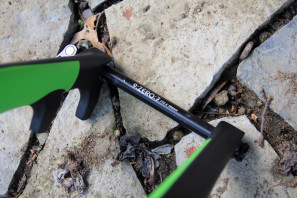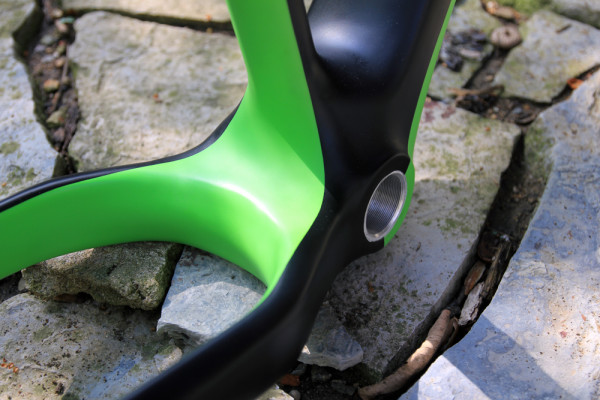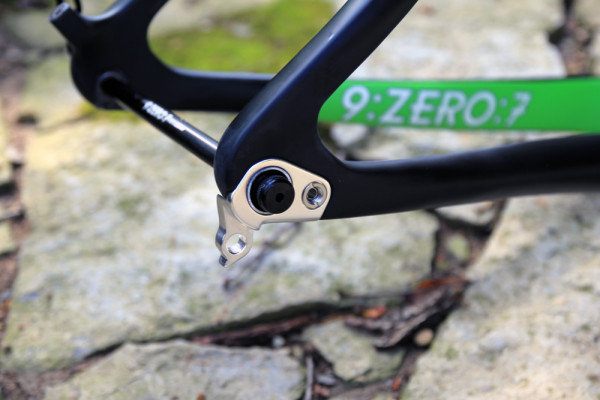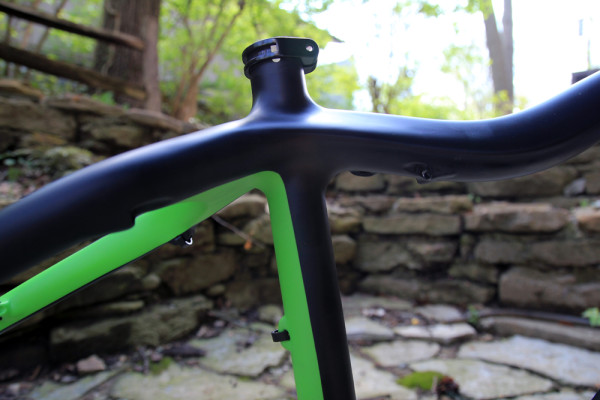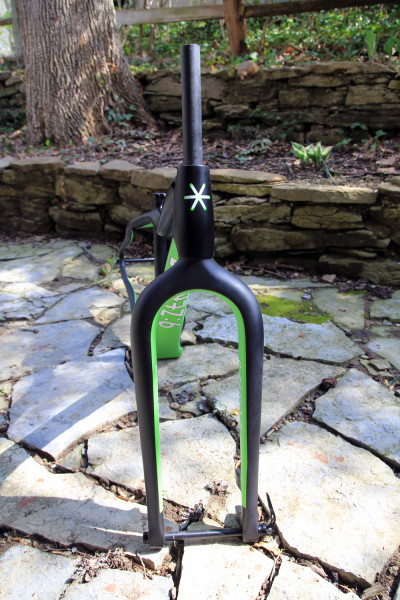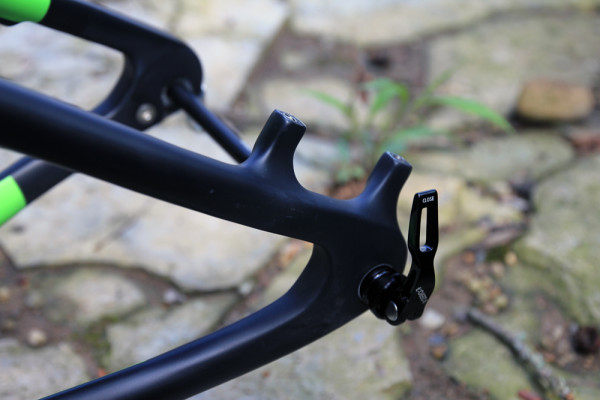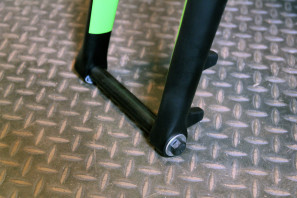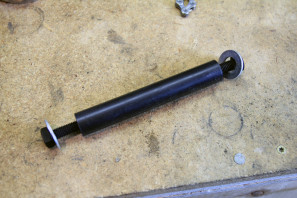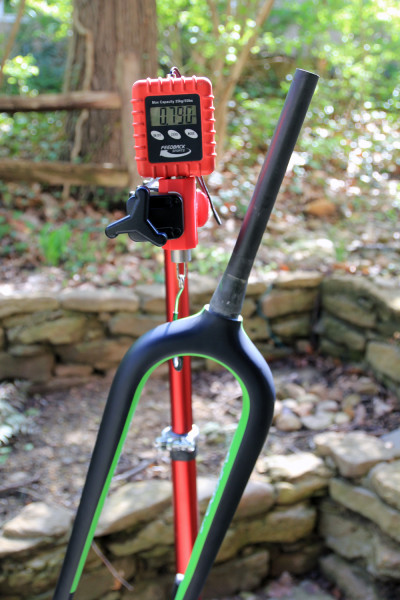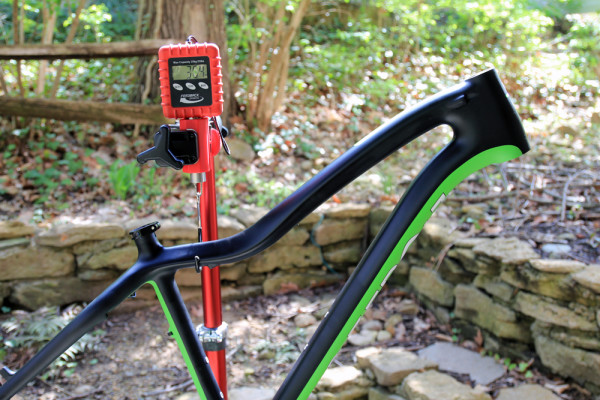Far from their humble beginnings, fat bikes have skyrocketed in popularity. Along with that popularity comes new materials and investment as companies try to stand out with the next greatest fat bike. Few companies like 9:Zero:7 have been around since the beginning, building fat tire’d monsters out of Alaska since 2004. Co-founded by Bill Fleming and Jamey Stull, 9:Zero:7 produced the first aluminum fat bike that was named the 9:zero:7 after the local area code.
After aluminum, the next logical step when it comes to stronger, faster, and lighter is, yes, carbon. Enter the 9:Zero:7 Whiteout – the company’s first carbon fiber fat bike. Built using the same geometry as their aluminum frames and Toray T700 and T800 carbon fiber, the Whiteout was created to tackle modern fat bike “standards” and run the fattest tires on the widest rims.
Serving as the platform for our next fat bike build, 9:Zero:7 sent over a bright green Whiteout to build up. We check in with the frame and fork after the break…
A huge part of designing fat bikes today comes down to standards, or the lack thereof. Multiple tire, rim, axle, and bottom bracket sizes can be difficult to wade through. If you make the frame able to accommodate the biggest tires and rims, smaller set ups will fit as well, which is what 9:zero:7 did with the Whiteout. Front axle spacing is a 135x15mm thru axle, with a 197x12mm rear thru axle, and a 100mm threaded bottom bracket. These measurements allow the frame to swallow 4.8″ tires on 100mm wide rims for the ultimate in flotation.
Of course, wider chainstays and rear end mean the need for a wider q-factor crankset which on a fat bike is already quite wide. However, thanks to the rise of 1x drivetrains, you can get away with a narrow Q-factor crank (200 vs 222mm) designed for 170mm fat bikes with a single ring up front and still clear the tire. 2x/3x drivetrains will still require the wider q-factor crank though and front derailleurs can be used on the frame with clamp-on adapters.
At the front and rear of the bike are 9:zero:7’s own QR thru axles, which use a threaded nut on the end similar to a standard quick release. The nut has its own counter bore where it sits in the frame, and the axle itself is adjusted like a normal quick release. The replaceable derailleur hanger is a large piece that sits independent of the rear axle and is held in place with a single chainring bolt. Unfortunately, the derailleur hanger is designed so that both the Park DAG-1 and DAG-2 will not fit. The DAG-2 was designed with a narrower bezel so that it would fit more modern bikes including full suspension frames, but it is still too wide for the threads to engage the Whiteout’s derailleur hanger.
Cable routing is a mix of internal and external with internal shift routing and external brake routing. This means there is no need to bleed brakes if you’re running hydraulics, but the shift cables are tucked out of the way. Shift routing is internal, but split so the shift cables are run through tunnels in the frame without housing.
In order to mount a seat to the Whiteout you will need a 30.9mm seat post.
Brakes are attached to the frame via 160mm post mounts front and rear. Whiteout frames include a full carbon tapered fork that measures in with a 45mm rake and 468mm axle to crown measurement. The fork sits in a 70 degree head tube that pairs with a 73 degree seat tube angle. The 135mm spacing accepts front specific disc brake spacing so it uses standard 135mm front hubs unlike forks like the White Brothers Snowpack we tested. Also included with the frame are the internal headset and carbon compression plug.
I’m always happy to see companies sweating the details when it comes to things like shipping, and 9:zero:7 deserves some recognition for their axle spacers. Admittedly there probably aren’t many 135×15/197×12 spacers available, but their stout spacers can be reused in the future for shipping your bike to distant adventures.
When placed on our scale both the frame and fork came in over the claimed weight which is probably because we weighed them with the axles and seat post clamp installed. With the additional parts, the frame clocked in at 1650g, or 3.64lbs and 790g for the fork. Still, for a medium frame and fork with thru axles capable of running the biggest tires and rims, that’s pretty light.
When it came time to build up the Whiteout, with the exception of the derailleur hanger issue, the frame was in great shape – post mounts were properly faced, the seat tube was smooth and free of burrs, BB threads were perfect, and the headset dropped right in. Also, thanks to the internal cable tunnels, you simply need to push the cable through and it will pop out the other end – no need to fish around inside the frame.
Offered in neon orange and neon green, Whiteout frames are sold in Small, Medium, and Large framesets for $2,299. Complete builds can also be purchased with the McGrath X-9 build retailing for $4,199 and the Nome X0-1 build for $5,199.
More to come with the build…
